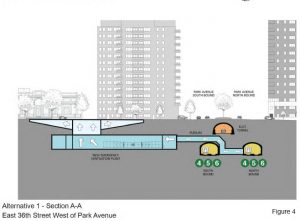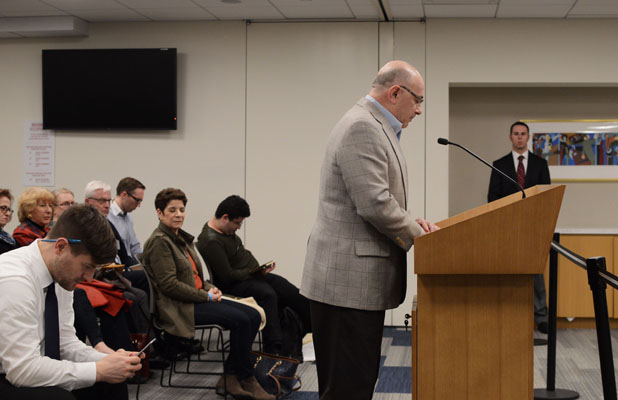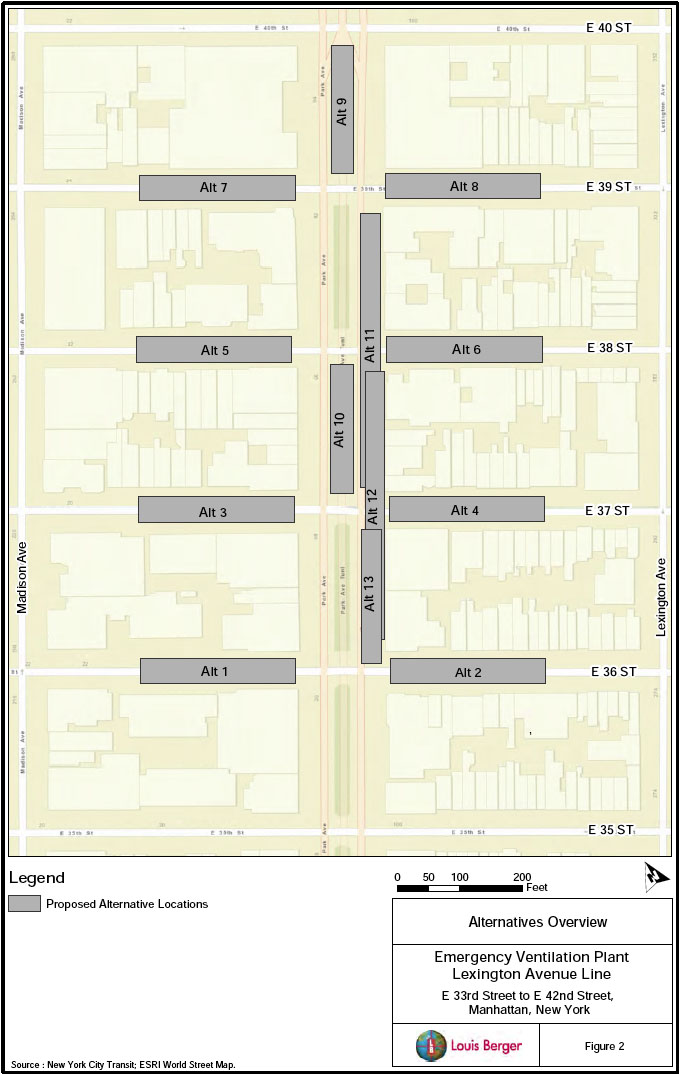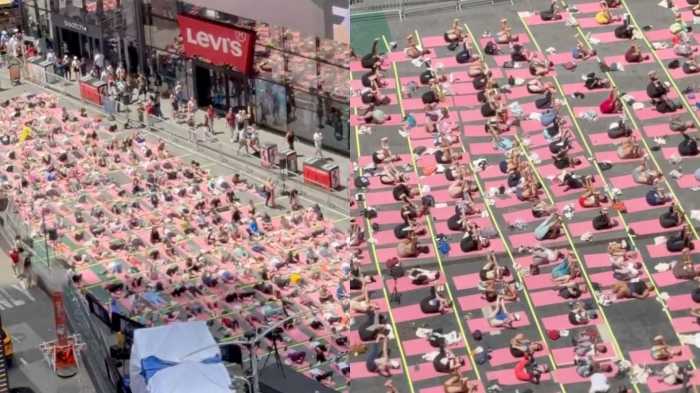
BY JACKSON CHEN | Despite the fact that a controversial Metropolitan Transportation Authority plan to build an emergency ventilation plant in Murray Hill has been put off until the agency’s next five-year capital plan, neighborhood residents are still fuming.
The MTA scheduled a hearing on the project on April 5 to take public testimony as part of the environmental review process, giving residents a chance to air their frustrations about the impact the project would have on their neighborhood. The agency’s proposal would create a ventilation plant to clear smoke created by fire emergencies in the underground tunnels of the Lexington Avenue Subway line between the 33rd Street and Grand Central-42nd Street Stations.
The project dates back to a 1994 study in which the MTA acknowledged that the nine-block stretch of subway tunnel has no mechanism for releasing smoke created by fire emergencies and ranked the area fifth out of 252 in terms of priority for remedying such situations.
Under the agency’s current consideration, there are 13 alternatives for siting the ventilation plant, all of which fall within the Murray Hill neighborhood.
Local residents who oppose the project did receive welcome news earlier this year when State Senator Liz Krueger explained the project was tabled for the time being. According to Krueger, the MTA removed the ventilation plant project from its current five-year capital plan and will revisit it during the 2020-2024 capital plan. Krueger’s letter noted that community opposition was partly responsible for the agency’s decision.

Even with the project put on pause, however, Murray Hill residents still felt it appropriate to give the MTA an earful, detailing their concerns and skepticism about the ventilation plant.
According to Bruce Podwal, a Park Avenue resident and retired civil engineer, the MTA hasn’t proven its case that the ventilation project is needed. Podwal said the MTA’s records show no injuries or deaths from smoke or fire conditions in that stretch of the Lexington Avenue Subway. He added that in the case of a terrorist attack involving chemical weapons, ventilation to the street level could potentially cause more deaths and injuries.
“There’s no justification to build a vent system that costs $100 million and doesn’t save lives,” Podwal said at the public hearing. “Either go with the no-action option to save money for important projects or build an alternative of just an emergency exit without a vent system.”
Many in the crowd that filled the public hearing room at 2 Broadway suggested the MTA simply kill the project and take no action. The agency acknowledged that outside of the 13 options for locating the ventilation plant, it could in fact decide to do nothing.
Some residents, however, like Maggie D’Arcy, are convinced the MTA will not much consider public input overall in making its decision.

“You’ve already decided what you’re going to do and you’re pushing it off a little bit,” D’Arcy said during her testimony to the agency. “But frankly, we’re not really included in this and the fact is it shouldn’t happen.”
D’Arcy added that beyond substantial neighborhood disruption from undertaking the ventilation, the MTA risked endangering local residents by exposing them to hazardous materials like asbestos and benzene.
Others complained about the MTA’s lack of transparency in releasing information about the project. Its opponents created a petition that has garnered close to 1,000 signatures.
The ventilation plant’s critics have won the support of Sal Albanese, who chaired the City Council Transportation Committee at the time the 1994 report was completed and is currently seeking the Democratic nomination for mayor. Speaking at the hearing, he urged the MTA to stop the project outright and consider safer alternatives. The fact that the project is based on a 23-year-old study, he said, means the issue should be revisited before the agency takes any action on a ventilation plant.
“The proposed ventilation plant would erode the integrity of the neighborhood,” Albanese said. “The landmark buildings would be compromised, severely impacting real estate and business values.”
The project may be halted for now, but for critics like Aimee Lee Ball, a 20-year Murray Hill resident, the MTA could revisit the idea at any time. Keeping their eyes on the agency, Ball and others emphasized their commitment to continue pushing against a project they consider unnecessary and damaging to their neighborhood.
“MTA, do not spend hundreds of millions of taxpayer dollars in a location where there’s never been a problem,” Ball told the agency. “Generations of residents, businesses, and visitors in Murray Hill will live with the consequences of how MTA proceeds now.”


































